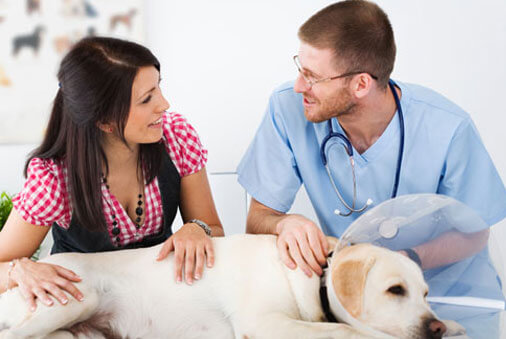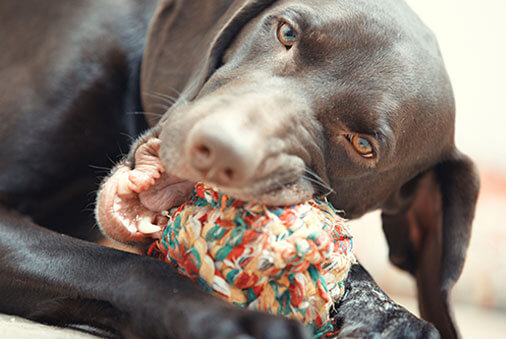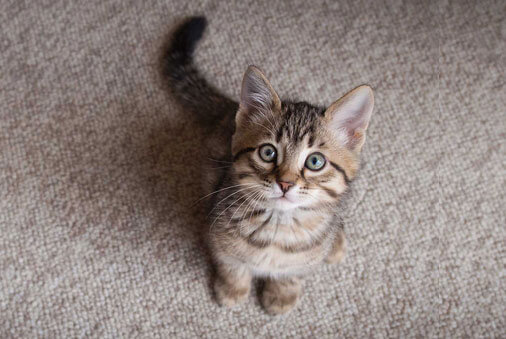Though pet parents don’t usually look forward to visiting the dentist, our furry friends’ health is in our hands so it’s important their teeth are checked and cleaned regularly by a veterinarian — as well as at home.
Genetics and diet can play a role in your pet’s dental health and your veterinarian will determine if there’s an underlying medical condition causing any issues. Most of the time, all your dog or cat will really need is a good cleaning.
Mouth maintenance
Check your best pal’s mouth regularly to spot tooth and gum issues before they progress into more serious problems.
What to watch for:
Bad breath: Tell your vet if your pet has unusually strong and offensive breath
Sensitive mouth: If your dog or cat paws at their face or mouth, it could indicate they’re in pain
Loss of appetite: They may have pain when they chew or swallow food
Discoloration: Yellow or brown stains on the teeth
Gum health: Bleeding, swollen or receding gums
M.I.A. choppers: Look for loose or missing teeth
Halitosis
Puppy and kitten breath may smell like popcorn or tuna, but if you need a gas mask when your furry friend gets within inches of your face, they might have halitosis. When bacteria hardens into plaque and eventually forms tartar on the tooth’s surface, breath can go from bad to worse.
Diabetes, rhinitis, sinusitis, gastrointestinal problems, or eating foul-smelling food, can all cause bad breath. Be sure to see your veterinarian so they can rule out non-dental causes if your pet has halitosis.
Gingivitis
Bacteria and plaque-forming foods can build up on your pet’s teeth and harden into tartar, which causes inflamed gums, Gingivitis. This red, swollen tissue can make gums recede and eventually lead to tooth loss. Solution? Regular brushing.
If your pet hasn’t had their teeth professionally cleaned and polished and you notice swollen or bleeding gums, halitosis or plaque build-up, you’ll need to have his/her teeth thoroughly scaled to remove the plaque before you begin DIY dental care.
Otherwise, brushing might be painful for your pet making it that much harder to establish a stress-free cleaning regimen for both of you.
Rub, brush, repeat
The best way to complement professional dental cleanings at your vet’s is to brush your best pal’s teeth and gums daily or, at the least, three times a week.
As with training, it’s also best to introduce your pet to this essential routine when they’re pups or kittens.
Periodontal disease, like Gingivitis, can occur as early as 2 years old, especially in small-breed dogs or cats, so the earlier you can stay on top of their teeth, the better.
You’ll need a toothbrush and toothpaste specifically made for pets. Ask your veterinarian for a recommendation; most pet supply stores, online and off, carry dental items. Caution: Don’t use “human” toothpaste or brushes. Pets need smaller toothbrushes designed for their mouths.
TIP: Make pet “paste” at home by combining baking soda and water.
Multiple siblings? If you have more than one dog or cat, they each need their own toothbrush to help keep bacteria from spreading and infecting the entire pack — which is especially important as pets get older.
Jaws wide open
Getting dogs and cats to open their mouths is half the battle when brushing, so try this:
Place one hand at the top of your pet’s snout and one hand underneath their mouth.
Gently press their lips against their teeth in a backward motion, using even pressure.
Continue applying light pressure until your dog or cat parts their lips and opens wide.
Tooth brushing tips for your dog or cat:
1. Supervise your dog or cat as they play nice with their special toothbrush so they associate it with fun. No chomping and breaking of brushes, please.
2. Dip your finger in your pet’s favorite broth (chicken, tuna, beef). As they lick your finger clean, ease it into their mouth and rub the tooth surface slowly for a short time. Try this once a day for a few days.
3. Switch to soft gauze wrapped around your finger or use a cotton swab and rub their teeth and gums gently to get them used to the “brushing” motion. Focus on the all-important gum line. Many pets have mild Gingivitis so don’t rub too forcefully as it could be painful.
4. Put some pet toothpaste on their lips to introduce them to the taste. Remember, you can make your own with baking soda and water.
5. Transition to the pet toothbrush. Hold the brush with the special toothpaste on top at a 45° angle to your pet’s teeth. Brush in small, circular motions, lifting their lips as needed. The teeth that are closest to your pet’s cheeks will most likely have the most tartar so use a downward stroke in those areas.
6. Brush the teeth on each side of your pet’s mouth for 30 seconds, at least three times a week.
If you work up to brushing your furry pal’s canines every day, Bravo! Your pet will be that much closer to garnering a clean bill of health. No matter what, a little weekly brushing is better than none.
Keep it clean
Although regular brushing is the best way to ensure lifelong dental health, there are other ways to help clean your pet’s choppers.
Dry hard foods help scrape off tooth debris as your dog or cat crunches away.
There are a variety of natural dental chews and toys that also act like floss to help pets enjoy optimal oral health, so add them to their dental regimen as well.
You may think your pet has self-cleaning canines but his/her teeth need attention to prevent more serious conditions from arising.
At-home dental hygiene helps cut the cost of professional cleanings by extending the time between appointments. Even more importantly, it can help promote your beloved companion’s well-being when they’re long (and healthy) in the tooth.
Cat and mouth disease
If your cat has problems chewing hard food, and her coat looks scraggly or matted due to lack of grooming, she may have oral pain due to inflamed gums and a swollen mouth: Gingivitis Stomatitis.
Have your veterinarian confirm if your cat’s gum line or throat is red and swollen. The cause of Gingivitis Stomatitis is unclear but, if diagnosed, your cat may need the affected teeth extracted. Strict brushing can help retain her remaining teeth.
Check for swollen gums regularly and notify your veterinarian because inflammation can also indicate more serious conditions like renal disease or Feline Immunodeficiency Virus (FIV).






